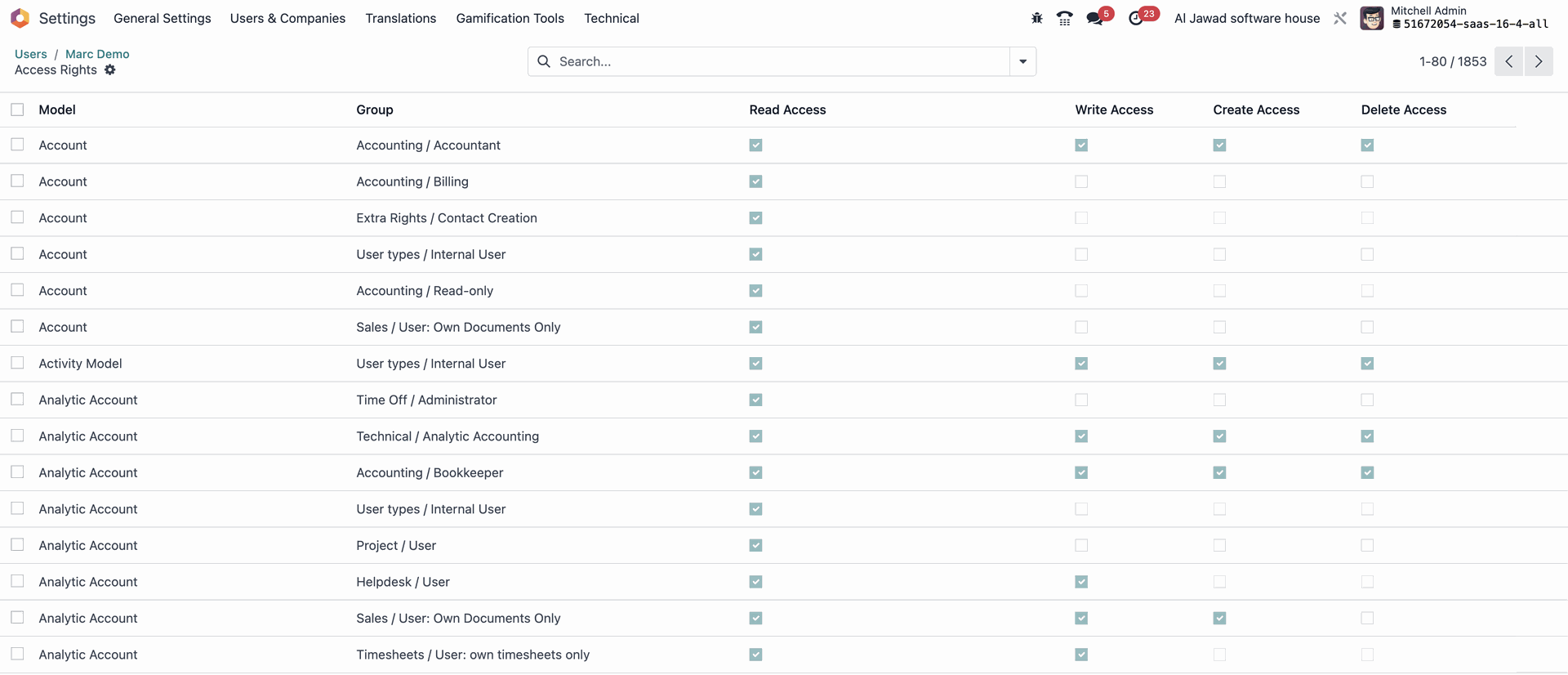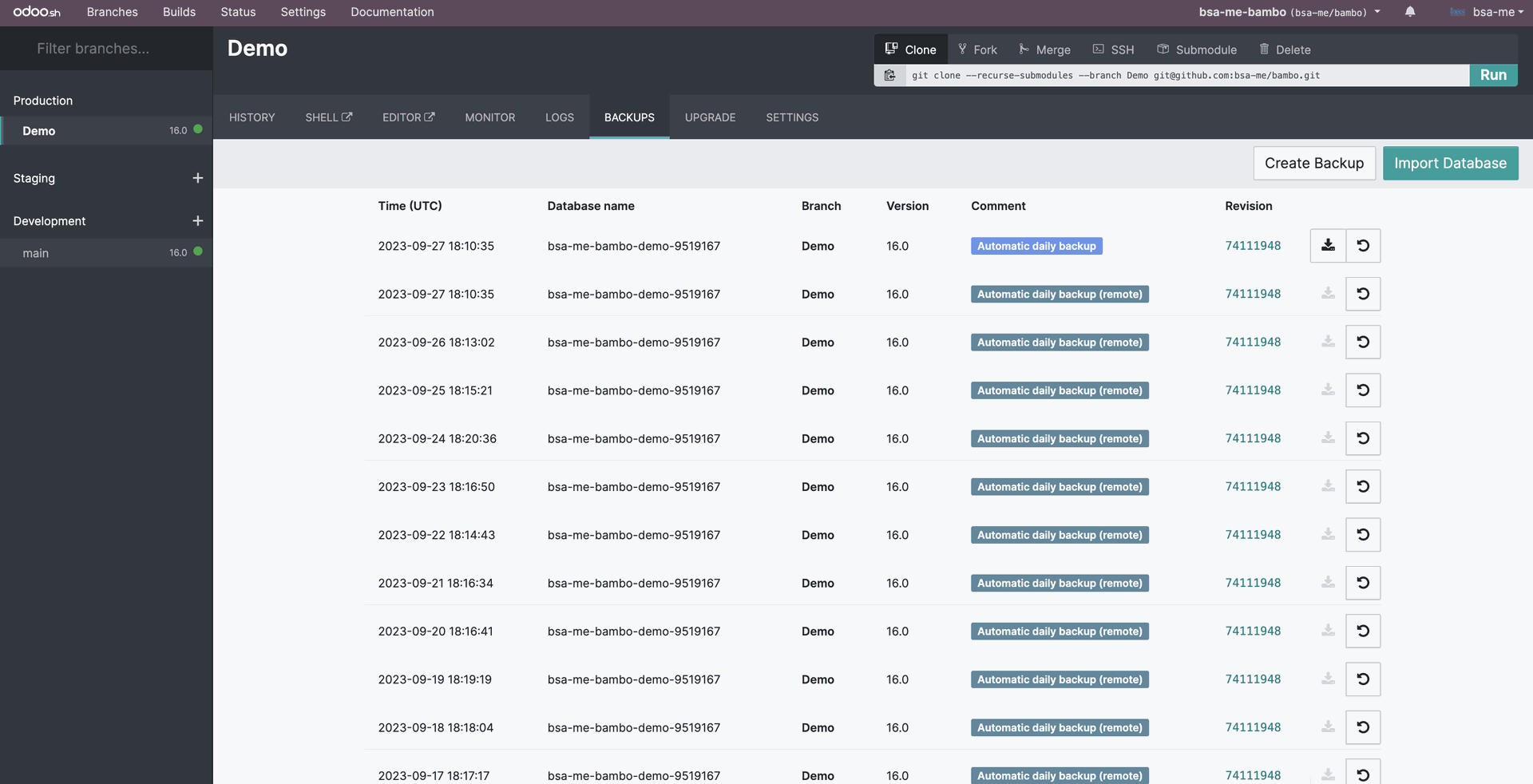In today's rapidly evolving digital landscape, the deployment of Odoo ERP has become a critical component of many organizations' operations. However, alongside the immense benefits of efficiency and functionality that Odoo brings, there is a pressing need to address security concerns.
This article examines the crucial security factors that need to be prioritized when implementing Odoo ERP, ranging from safeguarding sensitive information to defending against cyber attacks.
Join us as we delve into some important security considerations to keep in mind when going live with Odoo.
1. Keep your Odoo installation up to date
To guarantee the security of your Odoo system, it is crucial to regularly update it, which is the initial and essential step.
Odoo, like any other software, is a work in progress. The developers are constantly working on improving the system, fixing bugs, and patching security vulnerabilities. These updates are regularly released and are crucial for maintaining the security and performance of your system.
By staying up to date with these updates, you can protect your system from potential security threats. It's not just about fixing bugs and vulnerabilities, updates often come with new features and improvements that can enhance the functionality and user experience of your Odoo system. Therefore, it is recommended to have a system in place for regular updates and to monitor the official Odoo channels for any important announcements related to security updates.
2. Use strong passwords
Passwords are often the first line of defense against unauthorized access to your Odoo system. It is crucial to use strong, unique passwords for all user accounts. Avoid using common passwords or easily guessable information such as birthdays or names. Instead, use a combination of uppercase and lowercase letters, numbers, and special characters.
The strength of your password can make the difference between a secure system and a compromised one. A strong password is one that is difficult for others to guess or crack. It should be at least 8 characters long, although longer is better. It should not contain any personal information or common words.
Additionally, consider implementing two-factor authentication for an extra layer of security. Two-factor authentication requires users to provide two forms of identification before they can access the system. This could be a password and a code sent to their mobile device, for example. This adds an extra layer of security and makes it much harder for unauthorized users to gain access to your system.
3. Limit user access and permissions
Not all users need access to all modules and features in Odoo. By limiting user access and permissions, you can reduce the risk of unauthorized access and potential data breaches. Assign roles and permissions based on job responsibilities and only grant access to the modules and features necessary for each user's role.
This principle, known as the principle of least privilege (PoLP), is a computer security concept in which a user is given the minimum levels of access necessary to complete his or her job functions. This helps to reduce the potential attack surface and limit the damage that can be done in the event of a security breach.

User groups allow administrators to categorize users based on their roles and responsibilities, granting them access to specific modules and features. For instance, in the sales group, allowing access to product information while concealing cost details is a common scenario. This tailored approach not only safeguards sensitive data but also streamlines workflows, ensuring that users can focus on their specific tasks without being encumbered by irrelevant or confidential information. Regularly reviewing and fine-tuning access rights and record rules for each group is equally essential, as it ensures that evolving business needs and security considerations are effectively addressed.
By doing so, organizations can strike a delicate balance between security and productivity within their Odoo system, promoting smooth operations while safeguarding critical data. This combination of user groups and the PoLP forms a solid foundation for maintaining robust security within the Odoo ecosystem.
4. Regularly backup your data
Data loss can occur due to various reasons, including hardware failure, human error, or security breaches. Regularly backing up your Odoo data is essential to ensure that you can recover from any potential data loss.
Consider implementing an automated backup system that creates regular backups and stores them securely offsite. This not only protects your data from potential loss but also ensures that you can quickly recover and resume operations in the event of a disaster.
5. Secure your server environment
The security of your Odoo system is not solely dependent on the software itself. It is equally important to secure the server environment where Odoo is hosted. Ensure that your server is protected with a firewall and that all necessary security updates are applied.
Additionally, consider using encryption to secure data transmission between the server and client devices. Encryption converts data into a code to prevent unauthorized access. This is especially important when transmitting sensitive data, such as customer information or financial data.
6. Monitor and log system activities
Monitoring and logging system activities can help you detect and respond to potential security incidents. Implement a system that logs user activities, such as login attempts, module access, and data modifications. Regularly review these logs to identify any suspicious activities and take appropriate action if necessary.
Monitoring and logging can provide valuable insights into the security of your system. They can help you identify patterns and trends, detect anomalies, and respond to incidents in a timely manner. They can also provide evidence in the event of a security breach or investigation.
7. Educate your users
User awareness and education play a crucial role in maintaining the security of your Odoo system. Train your users on best practices for password management, recognizing phishing attempts, and handling sensitive data. Regularly remind them of the importance of following security protocols and reporting any suspicious activities.
Users are often the weakest link in the security chain. A single user who falls for a phishing scam or uses a weak password can compromise the entire system. Therefore, it is crucial to invest in user education and awareness.
8. Regularly perform security audits
Performing regular security audits can help you identify and address any vulnerabilities in your Odoo system. Consider hiring a professional security firm to conduct a thorough audit of your system. They can identify potential weaknesses and provide recommendations for improving the security of your Odoo implementation.
Security audits are a proactive way to ensure the security of your system. They can help you identify vulnerabilities before they can be exploited, ensure compliance with security standards and regulations, and demonstrate your commitment to security to your customers and stakeholders.
9. Consider Odoo.sh
Opting for www.odoo.sh/features, the cloud-based hosting platform for Odoo, offers several distinct advantages over traditional on-premise hosting, particularly in terms of security.

With Odoo.sh, you benefit from dedicated security experts who continuously monitor and update the platform to address emerging threats and vulnerabilities. The cloud infrastructure itself is designed to withstand DDoS attacks and provides data redundancy, minimizing the risk of data loss. Additionally, automated backups and seamless updates ensure that your system is always up-to-date and protected against known vulnerabilities.
Conclusion
When going live with your Odoo implementation, it is essential to prioritize security. By following the security considerations outlined in this article, you can minimize the risk of security breaches and protect your valuable data. Remember to keep your Odoo installation up to date, use strong passwords, limit user access and permissions, regularly backup your data, secure your server environment, monitor and log system activities, educate your users, and perform regular security audits. With these measures in place, you can confidently go live with your Odoo system knowing that it is secure and protected.